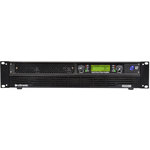Amplifier Classes
In audio, a power amplifier is the “engine” that drives the loudspeaker(s). It does this by receiving the input signal (from a mixing console, microphones, instruments, playback device etc.) and using a power source (mains electricity or battery) to increase the electrical power of the signal, so that it is enough to move the loudspeaker.

There have been many developments in audio electronics, resulting in different amplifier circuit designs. Such designs can be divided into classes, of which 4 main types are relevant to audio – A, AB, H and D. These are explained in more detail below but firstly, it is necessary to cover some amplifier basics...
In the early days of audio circuit design, amplification was performed by vacuum tubes (valves) but now this is usually taken care of using solid state devices (transistors), which are more efficient, smaller and cheaper to manufacture. Both vacuum tubes and transistors require a D.C. (direct current) power supply in order to amplify an audio signal. For amplifiers powered from the mains supply, which is A.C. (alternating current), this means that the amplifier needs a power supply circuit that converts the A.C. mains to D.C. at the required voltage for the transistors to work from.
Advances in electronic design have resulted in power supply circuits which can use very high frequency digital switching to “chop up” mains electricity and recombine it into lower voltage D.C. These circuits are called Switch-Mode Power Supplies (SMPS) and are much lighter and more efficient than traditional types. Some amplifiers still use traditional power supplies and others will use an SMPS.
The traditional way that a transistor uses power to make an audio signal larger is by acting as a gate. The incoming signal opens the gate more when its voltage is high and less when its voltage is low. This allows more or less of the power supply to flow through the transistor, much like turning a tap slightly can dramatically change the flow of water from a pipe.

Class A
In this configuration, the circuit is operating as a Class A amplifier, since the output voltage is always positive (or zero at minimum), which would result in the loudspeaker only ever moving forwards. To counter this, a negative voltage (bias) is added, so that 0V (zero Volts) is at the centre of the motion of the loudspeaker (i.e. when the loudspeaker is at rest).
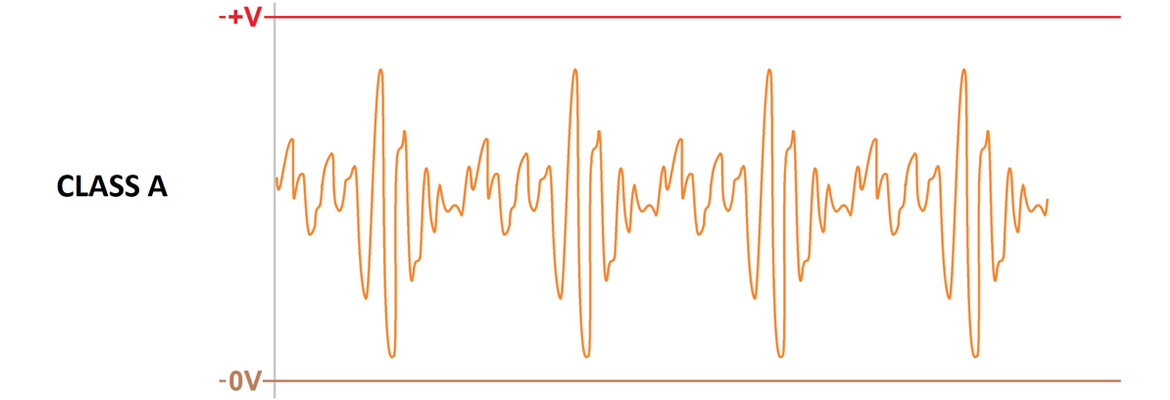
Class AB
Class A power amplifier designs are not very efficient or accurate, since each transistor is working hard to amplify all of the input signal and its electrical characteristics are different at maximum and minimum voltage states.
To solve this, a more efficient and balanced circuit design was developed, which uses one bank of transistors to amplify the positive sweep and a matching bank of transistors to amplify the negative sweep. This type of amplifier circuit is called Class AB and is one of the most commonly used types in the audio industry.
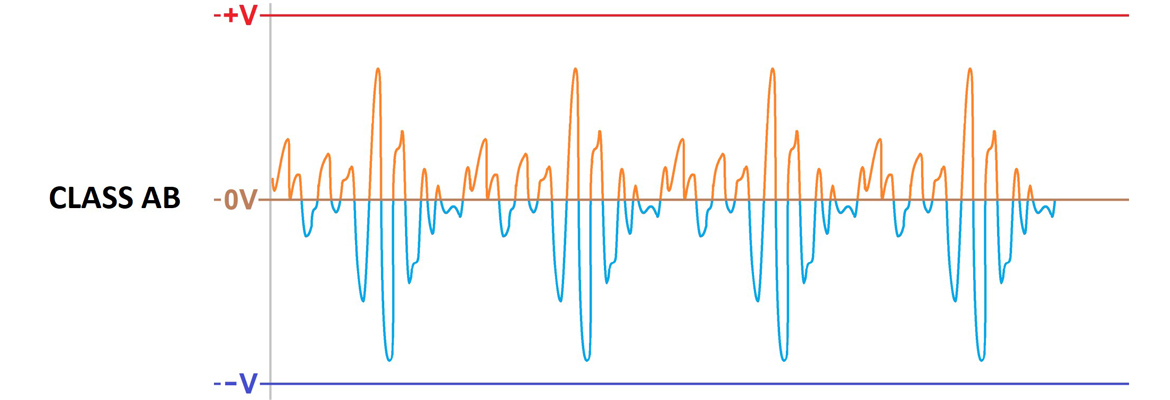
Class H
For high power applications, even Class AB has some limitations, since it still requires the maximum D.C. power to be available at all times. A more efficient way of handling the power conversion is to only make a proportion of the power supply available to the amplifier at all times and then convert more power as and when it is needed.
Class H amplifier designs enable the power supply to idle at a lower level until the amplifier demands more to deliver higher power peaks in the audio signal. This is perfect for audio, since the signal is usually only at higher peak levels occasionally and for a brief time. Usually this is caused by percussion instruments in music or consonant pops and click in vocal passages.
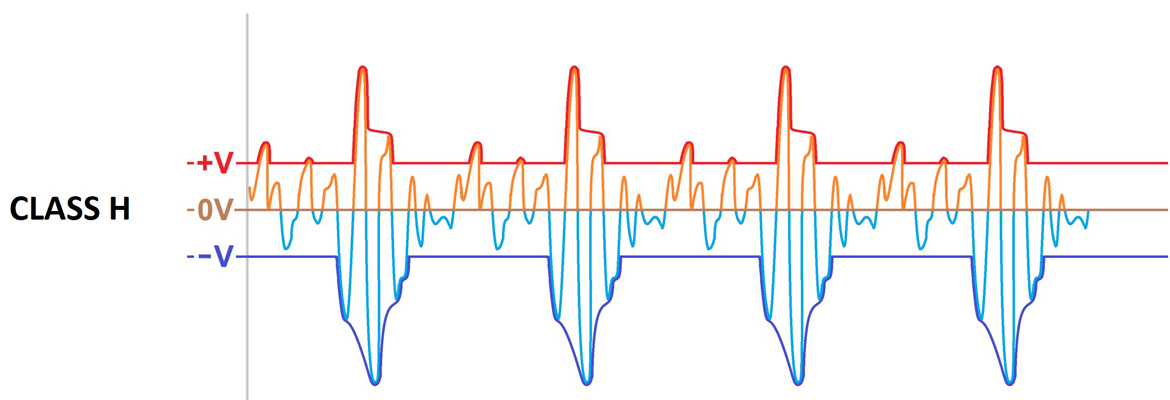
Class D
Thanks to digital technology, yet another more efficient circuit architecture has become available. This is called Class D and can be considered as being similar to a SMPS in reverse. Instead of converting mains A.C. to D.C. voltage, the Class D circuit converts the D.C. power into a high power A.C. audio output.
The audio input is converted into a digital format and is processed to control the switching of the D.C. power supply in very rapid pulses. A longer “on” pulse will result in a higher output voltage and a shorter “on” pulse will result in a lower output voltage. The stream of pulses is then filtered to remove the high switching frequency, resulting in a smooth amplified output.
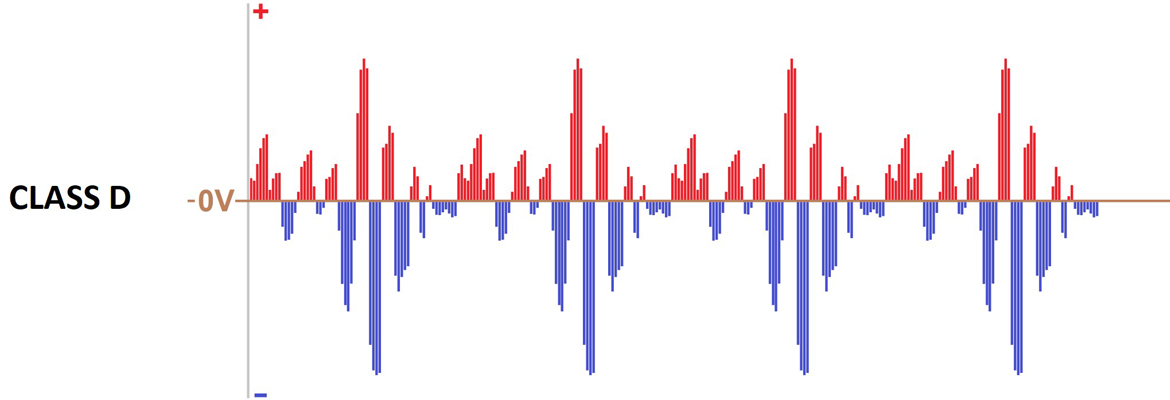
Class D amplifiers are now available as miniature surface-mount chips and combined with Switch-Mode Power Supplies can offer an efficient and cost-effective alternative to traditional amplifier designs.

Contents
Related Items
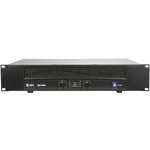
QA Series Power Amplifiers
1000W
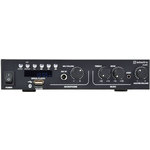
A200 Stereo PA Amplifier
2 x 100W
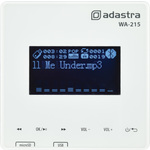
WA-215 Wall Mount Amplifier + Media Player with Bluetooth
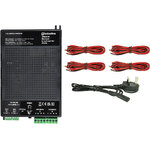
IWA In-Wall Amplifiers with Bluetooth
4 x 60W
A-series Multi Zone Stereo Amplifiers
4 x 2 x 200W
